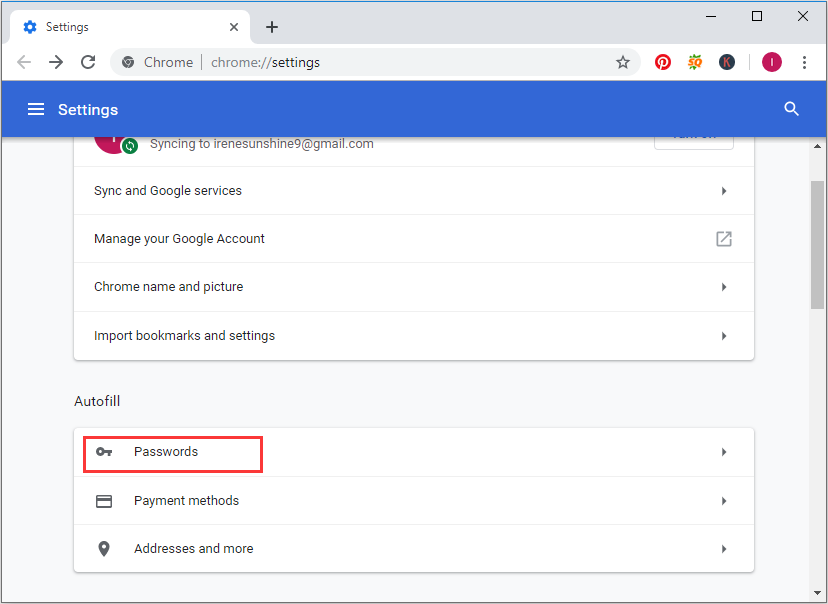
- #SAVE PASSWORDS IN CHROME HOW TO#
- #SAVE PASSWORDS IN CHROME FULL#
- #SAVE PASSWORDS IN CHROME PASSWORD#
Of course, you also have the option to enter passwords manually instead of waiting until you use the corresponding website. You can toggle this under the “Autofill” tab in Chrome settings if it’s not working.
#SAVE PASSWORDS IN CHROME HOW TO#
How To Add Passwords to Chrome IndividuallyĬhrome offers to save passwords automatically when you enter them on a website for the first time. csv files to import a total beyond 3,000. You need to split your passwords into multiple. csv file, you can store up to 10,000 passwords in a single Google account. While you can only import up to 3,000 passwords in a single. Finally, delete this file from your device after so that your passwords aren’t accessible to anyone else. Click “Import” and “Select File,” then upload the. Go to and click the Settings icon in the upper-right corner.ģ.
#SAVE PASSWORDS IN CHROME PASSWORD#
csv file should have three columns, one for the URL, username, and password associated with each account.Ģ. csv format if you have them stored somewhere else. Google only supports password imports from. csv (comma-separated values) file or add them to your account individually. You can either import your existing passwords through a. 99 (64-bit).First, you’ll need to store your passwords in Chrome. P.S.2 (January 24, 2022): I add that my "fix" still works PERFECTLY even with KUbuntu 21.10 and Chrome. P.S.: of course, my little "fix" works also for Chromium, Opera, Vivaldi, as well as any other Chromium-based browser which needs to talk with the KWallet demon in order to store login secrets. The usual procedure will start: but, this time, your login data should be kept where they have to, and you should be able to find them again the next time you'll need to use them. Then, try again to log in to Google, or Facebook, or whatever. But, at any rate, what you need to rebuild is your 'kwallet.kwl' file. Do whatever you like, here: if you usually put a password in there, do it or, leave it blank in order to avoid the hassle of having KWallet ask you for your password every time you open Chrome. On start-up, it will activate your KWallet application, which will prompt you for a password in order to store your login secrets privately.
#SAVE PASSWORDS IN CHROME FULL#
So I put in the full URL of " ", and this time Chrome offered to save my password.

Then when I reloaded my page, I again got the security error, and noticed the URL address bar had a red flag with https X'd out, and realized maybe Chrome is not saving passwords on insecure https sites. But Chrome never prompted me to save my password.Īfter a couple of days of this, I came and found this site, and after trying other things unsuccessfully, reset my Chrome settings to the default ("Settings" / "Show advanced settings." / "Reset settings").

However, I got a warning from Chrome (Chromium, actually) that warned that the https site was not secure I just went into the Advanced settings and told Chrome to ignore the security warning, and was able to log in. When I first connected, I left off most of the URL, just entering "bowser/admin", which worked (because of sufficiently satisfactory name resolution). We have a local server to which I was trying to connect - " ".


 0 kommentar(er)
0 kommentar(er)
